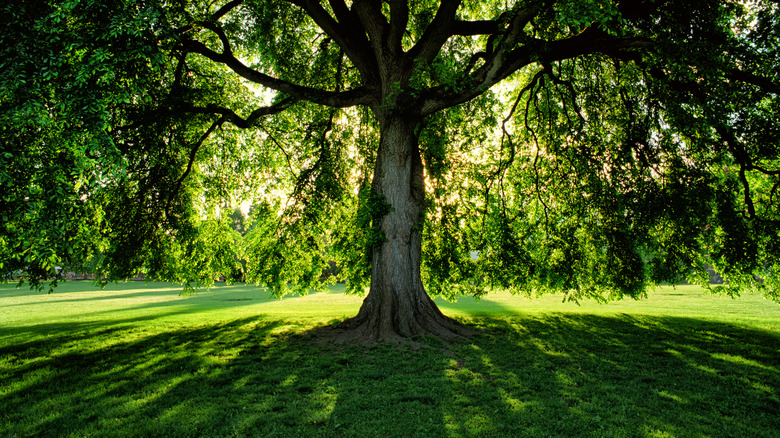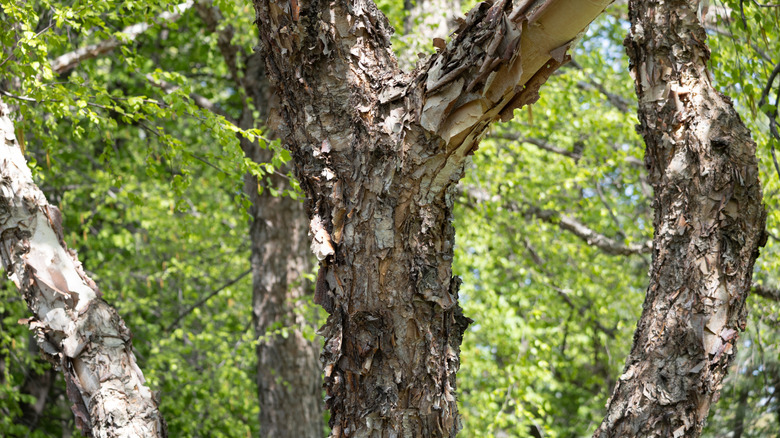Cool Down Your Yard By Planting This Stunning, Fast-Growing Shade Tree
A shaded area in your yard can be the difference between being swelteringly hot on summer days and having a cool and comfortable outdoor space to enjoy. Arguably, the best way to add those long, dark, cool shadows to your yard is with the help of a fast-growing shade tree. One of the best options is the beautiful river birch (Betula nigra).
Native to North America, river birches make excellent shade trees thanks in part to their rapid growth rate, which can be well over 2 feet a year. Their final height of around 40 feet or more, combined with their canopy's spread of over 20 feet, means they're perfect for shading large sections of your yard.
River birches are extremely beautiful trees as well, with bold green leaves that turn to gold in autumn. They also boast colorful peeling bark, which provides plenty of winter interest even after the trees have lost their leaves for the year.
Growing and caring for river birch trees
Hardy in zones 4 through 9, river birches are happiest in full sun to part shade locations. As their name implies, these trees naturally grow near rivers and thrive in moist soil. They're definitely not the trees to plant near your sewer lines or septic drain field.
If you don't have naturally moist soil, you may need to provide these water-loving trees with some extra hydration in the summer, especially during droughts. Unlike many trees that can't handle waterlogged soil, river birches could be ideal to plant in flood plains or rain gardens. Because river birches require acidic soil to thrive, they work well planted near other acid-loving shrubs and plants.
River birches are deciduous and drop their leaves, as well as their catkins, so they can be a bit messy and aren't the best trees for shading swimming pools or other areas that are challenging to clean. But as long as you have the right space for them, river birches are a great way to add beauty and shade to your yard. Even better, they help attract songbirds and pollinators, helping your landscape feel less like an overheated mess, and more like a cool and serene forest.

